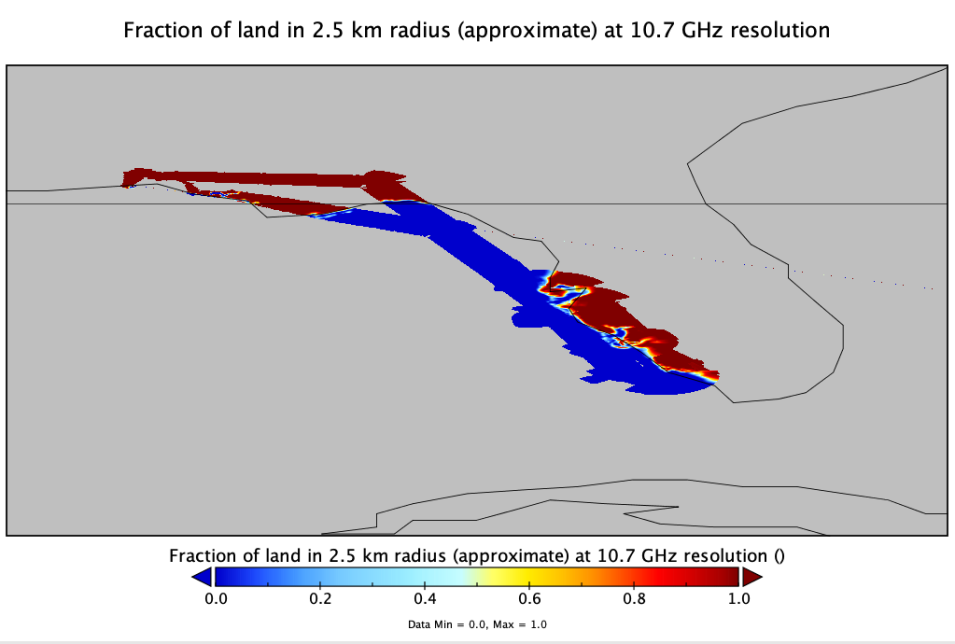The Advanced Microwave Precipitation Radiometer (AMPR) is a passive microwave radiometer sensitive to the emission and scattering of precipitation-size ice, liquid water, and water vapor. It senses passive microwave signatures of geophysical parameters from an airborne platform and is a low noise system which can provide multifrequency microwave imagery with high spatial and temporal resolution.
AMPR data are collected at a combination of frequencies unique to current NASA aircraft instrumentation. These frequencies are well suited to the study of rain cloud systems, but are also useful to studies of various ocean and land surface processes. Additionally, the aircraft information collected at these frequencies offer a rich data base for satellite simulations of the current Defense Meteorological Satellite Program (DMSP) Special Sensor Microwave/Imager (SSM/I), the NASA Tropical Rainfall Measuring Mission (TRMM) Microwave Imager (TMI), and the Advanced Microwave Scanning Radiometer (AMSR).
AMPR Specifications
AMPR is a total power scanning multifrequency passive radiometer which collects data at 10.7, 19.35, 37.1, and 85.5 GHz. AMPR is currently configured to fly aboard a NASA ER-2 aircraft which has an approximate cruising altitude of 20 km. The radiometer and accompanying data system are mounted behind the cockpit in the Q-bay section of the fuselage. The radiometer is positioned in the lower Q-bay with the scanning mirror extending below the body of the aircraft into a hatch with a porthole open to the ambient atmosphere. The data system is mounted above the radiometer in the upper Q-bay section.
AMPR is composed of two adjacent antenna systems with one large scanning mirror accommodating both systems. One antenna system was designed to use a copy of the SSM/I feedhorn for the three higher frequencies. The second antenna system collects data at 10.7 GHz using a feedhorn designed by Georgia Tech Research Institute (GTRI).
The ground spatial resolution of the nadir footprint from the nominal aircraft altitude of 20 km is 0.6 km for the 85.5 GHz channel, 1.5 km for 37.1 GHz, and 2.8 km for both the 19.35 and 10.7 channels. AMPR calibrates with external cold and warm loads after every fourth data scan. A total calibration sequence or a total data scan are each performed in a three second time period. The AMPR scanner sweeps through a total 90o (+/- 45o from nadir) data scan collecting a sample for each channel every 1.8o for a total of 50 samples per channel. Based upon an aircraft altitude of 20 km and an aircraft speed of 200 ms-1, this scan rate will yield contiguous footprints for the 85.5 GHz channel within a 40 km wide swath. The other three channels are oversampled by the factors given in the Instrument Characteristics table below which also lists other performance characteristics of the radiometer. The alignment of the feedhorns has been adjusted such that vertical polarization is received 45o to the left of nadir and horizontal is received 45o to the right of nadir. An equal mixture of vertical and horizontal polarizations is received at nadir.
| Frequency | IF Bandwidth | 3 dB Beamwidth | Oversampling | Mainbeam Efficiency | Cross- Polarization |
|---|---|---|---|---|---|
85.5 GHz | 1400 MHz | 1.8o | 1.0x | 93.2% | 1.4% |
37.1 GHz | 900MHz | 4.2o | 2.3x | 98.8% | 0.4% |
19.35 GHz | 240 MHz | 8.0o | 4.4x | 98.7% | 1.6% |
10.7 GHz | 100MHz | 8.0o | 4.4x | 97.8% | 0.2% |
